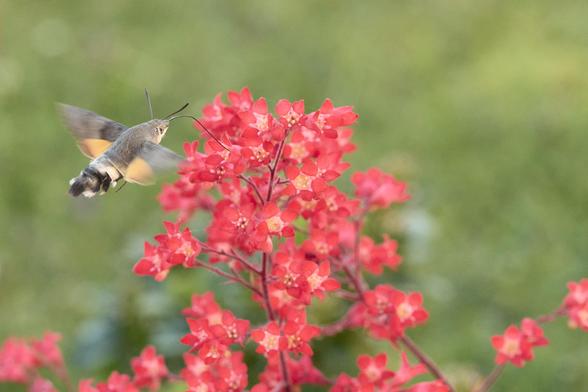Seen Hummingbird hawk-moths a few times over the years here in south eastern Germany. Yesterday I‘ve managed to snap photos of one at my in-laws garden.
Takeaway: my 20+ year old macro lens w/ it‘s 30y old design is good enough for immobile or slow objects, but too slow for most living creatures. I should probably upgrade. It‘s autofocus is already under-powered for slower insects, but mostly useless for faster moving insects, reptiles etc.
#HummingbirdHawkMoth #Photography #MacroPhotography

